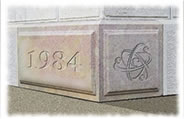Creating Empty & Full
The Sales & Counselor Selling Series
“You must empty a box before you can fill it.”
—Irish Proverb
Creating Emptiness: The Counselor’s Art
It’s not about having something to say, but about having something to accomplish.
You looked over that investment with great care, visited the firm, interviewed the management, sampled the product, evaluated the market, and, it’s all good! So, you invest, right?
Or not… Was there something missing? Not exactly…
But there was “nothing” missing. Because “Trust” is not a thing. It’s not “something.” It’s nothing. It has no material existence. But its presence or absence is enough to influence a professional analyst or a guy on the street. It’s “nothing,” but still, it’s something!
Trust is not created out of something, but out of nothing. When you pose a thought, then remain silent, that’s where the other has time to think. But more than that, when you pose the question and “create the emptiness,” there’s room for the other to recognize that you’re not in a hurry, not bringing pressure, but making a respectful place for him to contemplate… and that’s where Trust begins to take shape. You haven’t created “something.” You’ve created nothing — but a very special kind of nothing — a safe interval, wherein the other has a chance to ponder and decide.
Creating Fullness: The Excellent (but reserved) Speaker
Creating fullness is delicate work. Too much, is too much! So, the willingness to lay out an “Agenda of Choices,” then step back is a fundamental part of being a Counselor/Seller. Doing it well requires a lot of gentle stops and starts to seek and receive permission before plunging ahead to the next big idea. Not unlike dancing together, a sales conversation has an abundance of stops, starts and hesitations, which allow the respondents to slowly gain familiarity and trust in one another as they move toward an outcome.
The best practitioners seem to always have planned for more than what actually happens. If you’ve thought through your arguments, the evidence, and planned for all the differing potential outcomes, you’re prepared for whatever comes — you’re Full! And Confident enough to allow the right amount of Emptiness to manifest so the other can think, ask and respond.
In an interesting way, the tools of excellence in speaking aren’t really about speaking, but about the confidence to create the fullness and the emptiness which surrounds the words.
Remember, you’ve got to empty that space, before you can fill it.
Applications
1. For You
As children, we have an excess of Empty… things we don’t know, places we haven’t been, books and theories we haven’t read, philosophies we have yet to comprehend. And much of our time is spent acquiring facts, knowledge and experience. It’s not unusual that we come to equate emptiness with ignorance. For most, adulthood, confidence and fullness (which we tend to equate with wisdom) come with time. But for the few who continue to evolve, the attainment of emptiness is the true sign of maturity.
2. At Home
Not everyone has to talk… at least not at once. The ability to create a safe and loving emptiness (for your partner to think and ultimately fill), is perhaps the greatest gift. Of course, you have to “manage through speaking.” Mom and Dad, you must explain, order and respond to every “Why.” But that’s only half the job, (the Full). You must also give that child the benefit of “the Loving Empty” which makes it safe to experience, think out loud and test conclusions and wonder…
3. At Work
Too many colleagues are “Full of Themselves.” They mistake their own fullness as a reason to speak. “Something to say” is quite different than “something meaningful to contribute.” Being the one who can distinguish between a “pregnant pause” and a “satisfying completion” is a skill that designates a leader. Maybe you can become that leader.
Empty and Full are two equally important and complementary aspects of all communication. When you’re confident that you’ve created (but not yet released) Full, you can relax and create Empty, which gives your counterpart the confidence that you can be trusted.
Creating fullness is obvious and important of course, but creating emptiness is where the art begins.
Subscribe to our Newsletter


